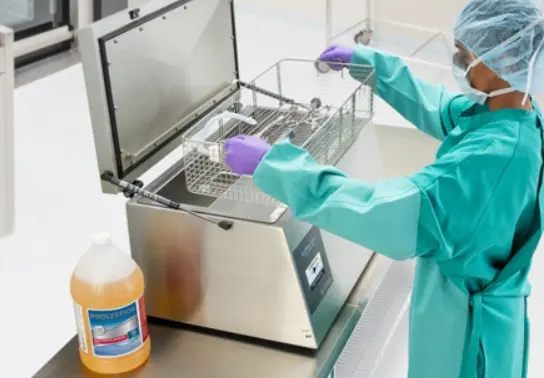In many settings, particularly in healthcare, food service, and manufacturing, maintaining a high standard of hygiene is crucial. Two common practices to ensure this are cleaning and disinfecting. While these terms are often used interchangeably, they represent different processes with distinct purposes. Understanding the difference between cleaning and disinfecting equipment is essential to ensuring that environments are not only visually clean but also safe and free from harmful microorganisms. This article explores the differences between cleaning and disinfecting, the importance of each, and the role of deep cleaning and disinfection equipment in maintaining hygiene standards.
Understanding Cleaning and Disinfecting
Cleaning refers to the process of removing dirt, dust, grime, and impurities from surfaces or objects. This is usually done using soap, detergents, and water. Cleaning helps to make surfaces look neat, removing visible soil and debris. However, cleaning alone does not necessarily kill bacteria, viruses, or other microorganisms that may be present.
Disinfecting, on the other hand, goes beyond surface cleaning. It involves using chemical agents specifically designed to kill germs on surfaces and objects. Disinfecting is aimed at reducing the number of microorganisms to a level that is considered safe according to public health standards or requirements. While disinfecting does not necessarily clean dirty surfaces, it ensures that harmful germs are effectively eliminated.

Key Differences Between Cleaning and Disinfecting
- Purpose:
- Cleaning focuses on removing visible dirt and grime from surfaces. It is primarily concerned with aesthetics and general hygiene.
- Disinfecting is aimed at killing germs and reducing the risk of infection. The primary goal is to eliminate harmful microorganisms that could cause illness.
- Process:
- Cleaning typically involves using soap or detergents and water to physically remove contaminants from surfaces. It may also involve scrubbing or wiping.
- Disinfecting requires the use of chemical disinfectants, such as bleach or alcohol-based solutions, that are capable of killing bacteria, viruses, and fungi.
- Effectiveness Against Microorganisms:
- Cleaning does not necessarily kill germs but can reduce their numbers by removing them from surfaces.
- Disinfecting is specifically designed to kill or deactivate germs, providing a higher level of microbial control.
- Application:
- Cleaning is suitable for general maintenance and upkeep of spaces. It is typically the first step in any hygiene routine.
- Disinfecting is often used in conjunction with cleaning, especially in environments where hygiene is critical, such as hospitals, kitchens, and laboratories.
For environments that require a high standard of cleanliness, such as medical facilities, food processing plants, and clean rooms, regular cleaning and disinfecting may not be enough. This is where deep cleaning and disinfection equipment come into play. These specialized tools are designed to ensure thorough cleaning and disinfection, going beyond what standard cleaning methods can achieve.
Deep Cleaning Equipment
Deep cleaning equipment is designed to remove deeply embedded dirt, grime, and residues that accumulate over time. This type of equipment typically includes high-powered vacuums, steam cleaners, and scrubbers that can reach into crevices and areas that are difficult to clean manually. Deep cleaning is crucial in maintaining overall hygiene and preventing the buildup of contaminants that could contribute to bacterial growth and unpleasant odors.
Examples of deep-cleaning equipment include:
- Steam Cleaners: Utilize high-temperature steam to dissolve dirt and grime, providing a chemical-free cleaning option that also kills some bacteria and viruses.
- High-Powered Vacuums: Remove dust and debris from carpets, upholstery, and hard floors. Some models are equipped with HEPA filters to trap allergens and microscopic particles.
- Floor Scrubbers: Mechanical devices that scrub and wash floors using rotating brushes and cleaning solutions, ideal for large areas and high-traffic zones.
Disinfection Equipment
Disinfection equipment is specifically designed to eliminate harmful microorganisms. This equipment is often used in settings where sterilization is critical, such as hospitals, laboratories, and food processing facilities. Disinfection equipment can range from simple chemical sprayers to advanced ultraviolet (UV) light devices that can disinfect surfaces and air.
Examples of disinfection equipment include:
- Chemical Sprayers and Foggers: Disperse disinfectants in a fine mist, covering large areas quickly and evenly. These are ideal for disinfecting rooms, surfaces, and equipment.
- UV Light Devices: Use ultraviolet light to kill bacteria and viruses on surfaces and in the air. UV-C light is particularly effective at disrupting the DNA of microorganisms, rendering them inactive.
- Electrostatic Sprayers: Use an electrostatic charge to ensure that disinfectant solutions adhere evenly to all surfaces, including hard-to-reach areas.
Importance of Combining Cleaning and Disinfecting
To maintain a safe and hygienic environment, it is essential to combine both cleaning and disinfecting practices. Cleaning should always precede disinfecting because disinfectants are less effective on surfaces that are covered in dirt or grime. By first cleaning to remove physical contaminants and then disinfecting to kill germs, you can ensure a comprehensive approach to hygiene.
In environments like healthcare facilities, combining regular cleaning with deep cleaning and disinfection protocols is critical to preventing the spread of infections. Similarly, in food service settings, thorough cleaning and disinfection are vital to prevent foodborne illnesses.
Conclusion
Understanding the difference between cleaning and disinfecting is crucial for maintaining a healthy environment, especially in settings where hygiene is paramount. While cleaning removes visible dirt and grime, disinfecting eliminates harmful microorganisms. For comprehensive hygiene, both processes should be integrated, and the use of deep cleaning and disinfection equipment can further enhance the effectiveness of these efforts. By implementing a thorough cleaning and disinfection strategy, you can create a safer, healthier environment for everyone.